For that probably-very limited subset of downhill mountain bike riders that are interested in electric bikes, the Haibike XDURO Nduro RX is a dream come true. This is an electric bike that is quite capable of powering you up mountains and then delivering pro-level performance on the way down. The motor and battery weight are balanced on the frame (kept low and center) and relatively well protected from rocks, logs and other hard obstacles that might come into contact. The hydraulic disc brakes were designed with heavy use in mind and have integrated heat sinks for those long downhill sections. the seat post dropper with remote activation lets you stay in motion while adjusting for climbs and descents and the CTD (climb, trail, descend) Fox air suspension is also very convenient to adjust. The first question that came to mind while demoing the Nduro RX wasn’t “is it capable of handing rough terrain” or “what kind of range can I expect”, it was actually more along the lines of “is this bike worth ~$2,000 more than the Haibike FS RX 27.5” model. Do I need 180 mm suspension travel vs. 120 mm? Are these upgraded components necessary for the type of riding I’m doing and if so, should I upgrade further to the $9,000 Haibike Nduro RX Pro that’s two pounds lighter? In short, this electric bike was designed for heavier downhill riding and integrates some of the best components and drive systems around while keeping the price from getting out of control. This is an electric bike that any shop would feel comfortable servicing because the motor is so independent from the cassette and derailleur. It has quick release wheels, off the shelf suspension and trusted hardware. It’s a bicycle first but one that’s encumbered by a 5.5 lb motor and 8.8 lb battery pack and is limited to just 10 gears vs. 21 or 27. In my experience however, most downhill bikes sacrifice gear range in favor of tighter, shorter chains and simpler tougher systems (no front derailleur) so maybe that’s a moot point.
The centerdrive system on the Haibike XDURO Nduro RX consists of a 350 watt geared centerdrive motor developed by Bosch. This is one of the best motors around in my opinion and is quite capable of climbing even the steepest terrain while still achieving impressive range. It can only be activated through pedaling but is super smart, measuring your rear wheel speed, pedal cadence and pedal torque at ~1,000 times per second! Instead of turning one of the bicycle wheels directly, as a hub motor would, the Bosch Centerdrive spins a small sprocket that pulls the chain and leverages gears in the rear cassette for improved climbing ability or top speed. Note that the smaller front sprocket does not require the rider to pedal faster, it’s actually geared to rotate ~2 times for every pedal stroke. It doesn’t introduce significant drag to the system and can be used even in non electric mode, pedaling as you would with a traditional unpowered bicycle. The true benefit to the smaller ring is that it allows the motor to operate at more efficient RPM’s and deliver more effective torque. One possible downside to mid-drive motors like this is that they can increase the strain and wear on your chain and cassette but the Bosch system minimizes this because it has shift detection built in. It automatically lets up when it senses that you’re shifting gears and this reduces mashing. I’ve tested other Haibikes more thoroughly than the Nduro and had the chance to take them on trails in Colorado. What I found was that I used the motor to climb but shut it off on the way down and even on some flat sections. Even if you left it on constantly but rode in the lowest “Eco” mode, the range and performance are very impressive… like 60+ miles impressive. One big question people often ask is “how loud is the motor” and what I’ve found is that noise output depends on which mode you’re using. I often power down when passing people on the trail to be polite and noticed that the sound of my wheel on the dirt and rocks actually muffles the sound of the motor in most cases. It’s not any more pronounced (probably less so) than those freewheel hubs that click when you’re not pedaling. Hopefully the video review above helps to give you some idea but note that the frame-mounted shots tend exaggerate the sound as it gets passed through the frame and into the camera.
Powering the motor here is a Bosch Powerpack 400 battery (that actually delivers 396 watt hours of juice). It’s a beautiful looking pack that’s easy to charge on or off the bike and the locking core (made by ABUS) is sturdy with each key being securely unique (it’s a routed in-cut key like many cars now use). The battery pack itself has a set of five LEDs built in so you can quickly determine the charge level whether it’s on or off the ebike. I recommend charging the pack after at least one bar has been used or before storing for long periods of time. It’s wise to top it off ever three months if you haven’t used it and storing it in an environment that doesn’t get too hot or cold will also help it last longer. The batteries inside the pack are 18650 size and contain a Lithium Manganese chemistry that’s valued for being light weight and durable. These are the same cells used in electric cars like the Tesla Roadster or Model S and of similar high quality. The one complaint I do have with regard to the battery is that it’s not completely integrated into the downtube like the Specialized Turbo or Stromer ST2… This puts weight higher up, doesn’t look as clean and takes up valuable space on the downtube that might otherwise be used for a bottle cage mounting point. With the Nduro RX there are not bosses for mounting a water bottle cage and that means you’ll probably want a CamelBak or similar hydration system. One upside here however is that the battery pack is less expensive to replace, being interchangeable with any other Bosch Gen 2 powered ebike. It should last for 1,000+ charge cycles if cared for and even comes with a two year warranty which is one of the longest I’m aware of in the ebike space. If you do need a replacement (or decide to get a second pack) Currie Technologies offers them for ~$600. In the US, Haibike is supported through Currie and Bosch is supported through Magura.
The control interface on the Haibike XDURO Nduro RX electric bike is the same as all other Bosch systems for this generation. It shows speed, distance traveled, battery capacity remaining, timer and range estimation for each of four assist levels. It’s really neat to see (on the fly) just how far the range estimator thinks you can go because it empowers you to plan accordingly and pop the battery off for a quick charge if needed. You can usually get the pack to ~80% capacity in just an hour and a half. In addition to the removable backlit LCD screen (which has four buttons surrounding it including power, reset, information and lights) there is also an independent button pad that lets you go up or down in assist modes. I like the tactile clicking feedback it produces as you navigate because once you get used to it, you really don’t have to take your eyes off the trail to navigate and control the bike. The display is really one of my favorites on any electric bike because it can be swiveled forward and back to reduce glare and is completely removable for parking in public spaces or simply reducing wear and weight. It even has a micro USB port on the right side which could be useful for powering some small portable electronic devices. If you’re someone who does a lot of trail riding at night, I’ve seen shops that offer to integrate lights and the display has a switch setup to turn them on or off (which basically just turns on/off the backlight on the display if lights aren’t present).
There’s really a lot to appreciate about this bike and even though I’m not a seasoned downhill rider, I could sense the quality and attention to detail. With four frame sizes to choose from it’s one of the few electric bikes that can be setup to fit and ride properly. It doesn’t offer throttle mode but that’s almost preferable for trail riding where you don’t want to compromise your grip or over complicate the cockpit area. The motor is strong and amazingly responsive so it really feels like an extension of you than a powered machine. Growing up in Colorado I would regularly visit ski areas in the summer months and take the gondola up with a rental bike to bomb down. It was a blast, truly a rush of adrenaline and an experience that would have been difficult to replicate without spending hours hiking up. With the advent of ebikes like the Nduro RX just about any mountain becomes accessible and you don’t have to spend the drive time or chairlift money to make it happen. There were always hard core riders who would actually pedal up and then bomb trails but with some knee injuries I’ve experienced snowboarding and surfing, that just isn’t an option and frankly, I’d rather focus on the fun parts with a bike like this.
Pros:
- Quality CTD air suspension from Fox is light weight, rugged, offers plenty of travel (180 mm front and rear) and has three easy settings for Climb, Trail and Descend
- Proprietary Sprocket Equalizing System (SES) reduces chain kickback, keeps the chain from slapping the rear stay when riding on rough terrain and reduces drops, the chain itself has teeth that alternate from fat to skinny which helps to reduce slipping
- The Shimano SLX brake pads are connected to heat sinks designed to more rapidly dissipate heat that gets generated on long downhill stretches of terrain
- Sturdy thru-axles add stiffness and strength for downhill riding, they also make it easier to put the wheels on and line up the disc brake rotors
- Seat post dropper with remote activation is perfect for on the fly body position adjustment, drop the seat when bombing downhill sections so you can use your legs as shock absorbers then raise it instantly for climbing and spinning on flats
- Quick release on front and rear wheel makes the bike easier to break down when transporting it in your car and comes in handy for trail maintenance, also makes the bike less intimidating to work on
- Excellent range thanks to the efficient centerdrive motor that leverages the rear cassette and high performance Lithium-ion 396 watt hour battery
- Great torque output, this bike can climb very well in Turbo mode when you’re pedaling with a lower gear
- Battery pack locks to frame for security using a quality ABUS core, it can be charged on or off the frame for convenience or to reduce weight if you’d like to ride this as a normal bicycle
- Stiff cranks, peformance wheelset, decent aluminum alloy platform pedals, rigid frame for good power transfer when riding, tapered head tube for strength
- Solid 10 speed cassette with quality Shimano Deore XT M 786 Shadow Plus components offering a comfortable cadence at many speeds
- Great customer support and warranty from Currie Technologies in the US (part of Accell Group which owns Haibike)
- Four frame sizes offer better fit for a wider range of riders (40cm, 45cm, 50cm, 55cm)
- Shift detection helps reduce wear on the chain and sprockets, the bike experiences less mashing and is more intuitive to ride as a result
Cons:
- Much more expensive than the Haibike XDURO FS RX 27.5″ full suspension offering ($2,000+ more) but you get higher quality components, 26″ wheels vs. 27.5″ for improved handling in downhill environments and the long travel 180 mm suspension vs. 120
- The battery pack takes up the space where a water bottle cage might otherwise mount and there isn’t one on the seat tube due to the rear suspension setup, consider and aftermarket accessory for the saddle rails or grab a CamelBak
- No throttle mode, this bike only offers pedal assist (like all Bosch powered systems) but will get a better range than if it did, top speed is limited to 20 mph
Resources:
- Official Site: http://www.haibikeusa.com/
- More Pictures: https://goo.gl/photos/Hay3nFCd6hxfjvVC9

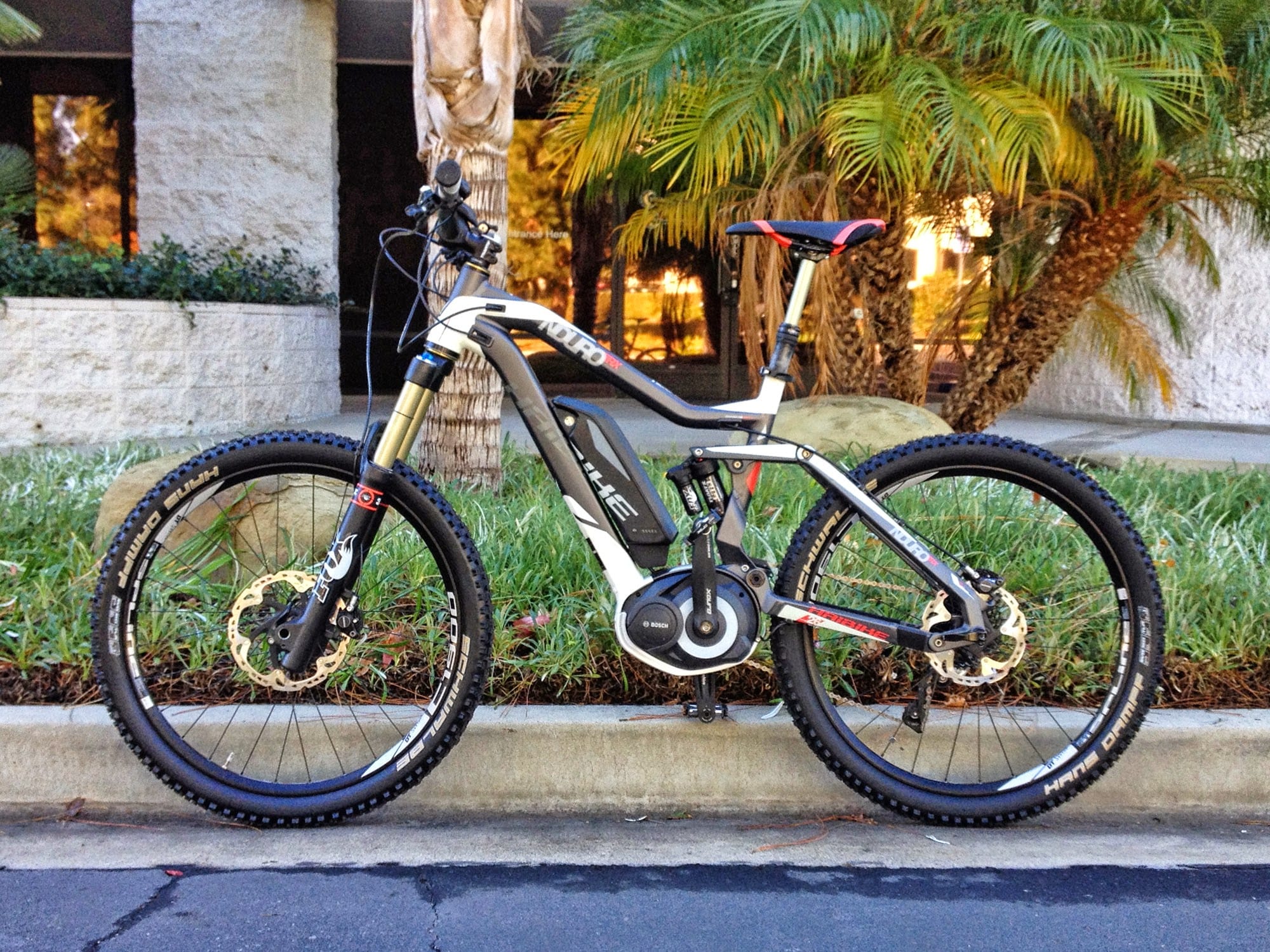
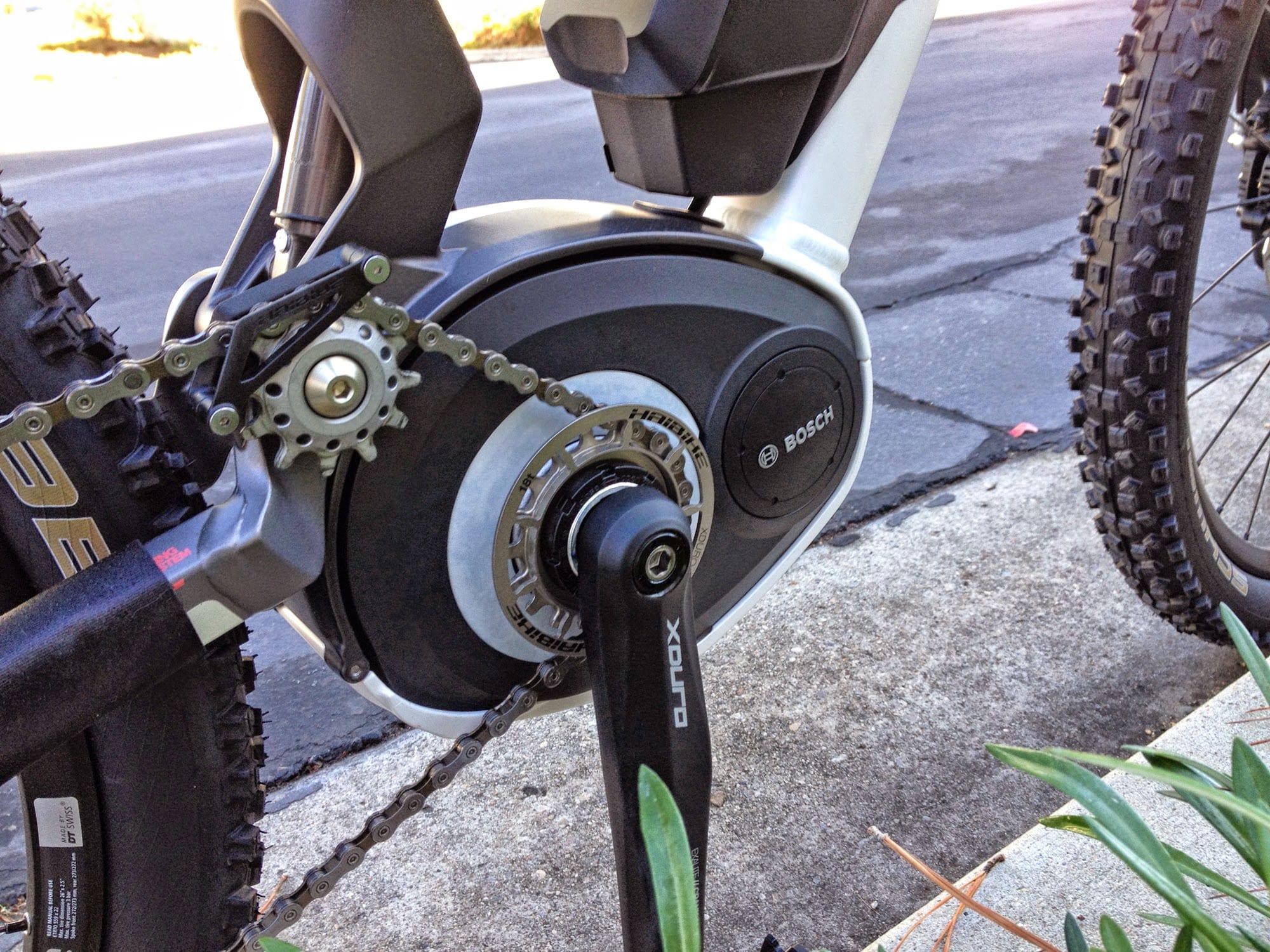
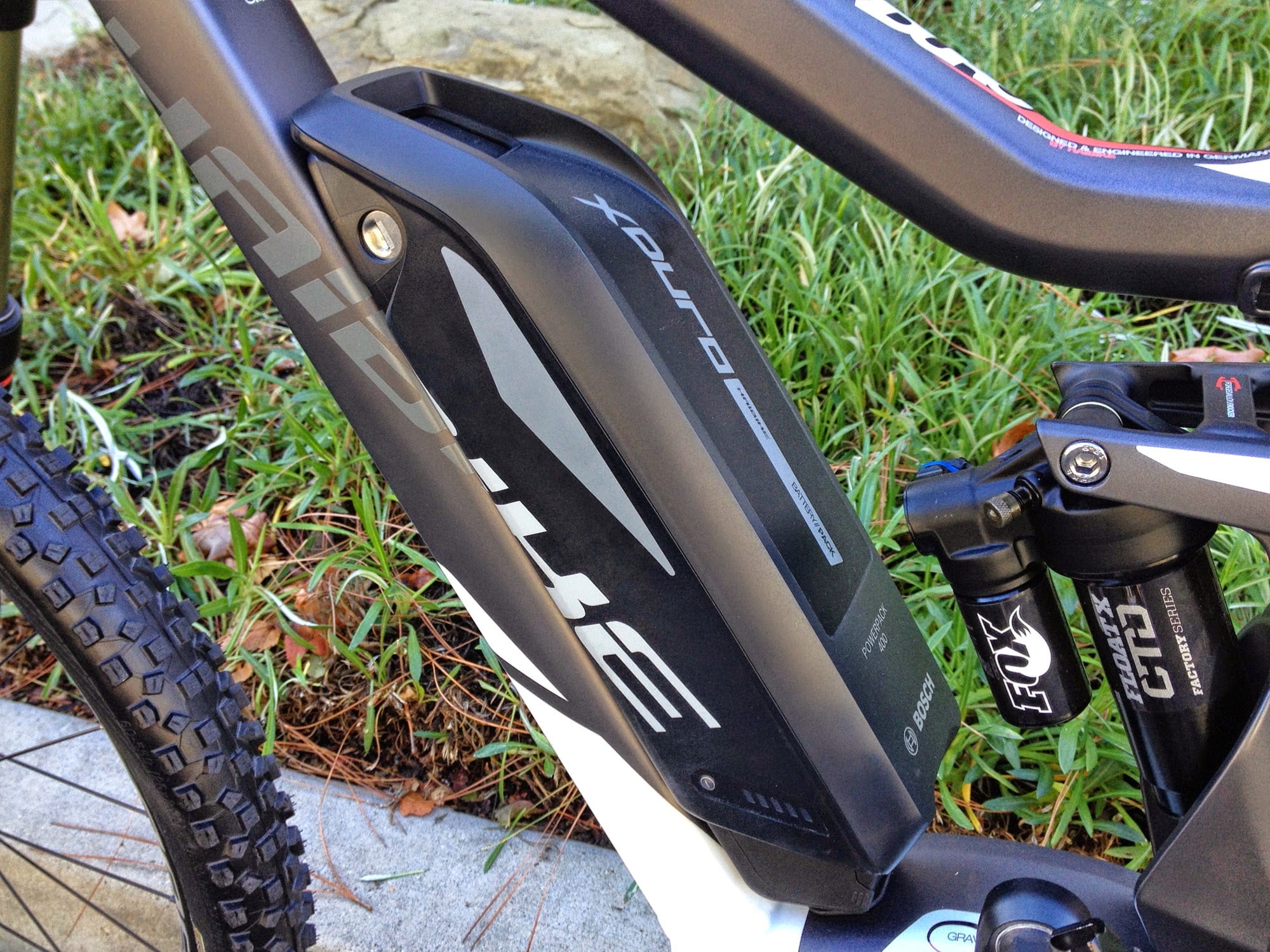
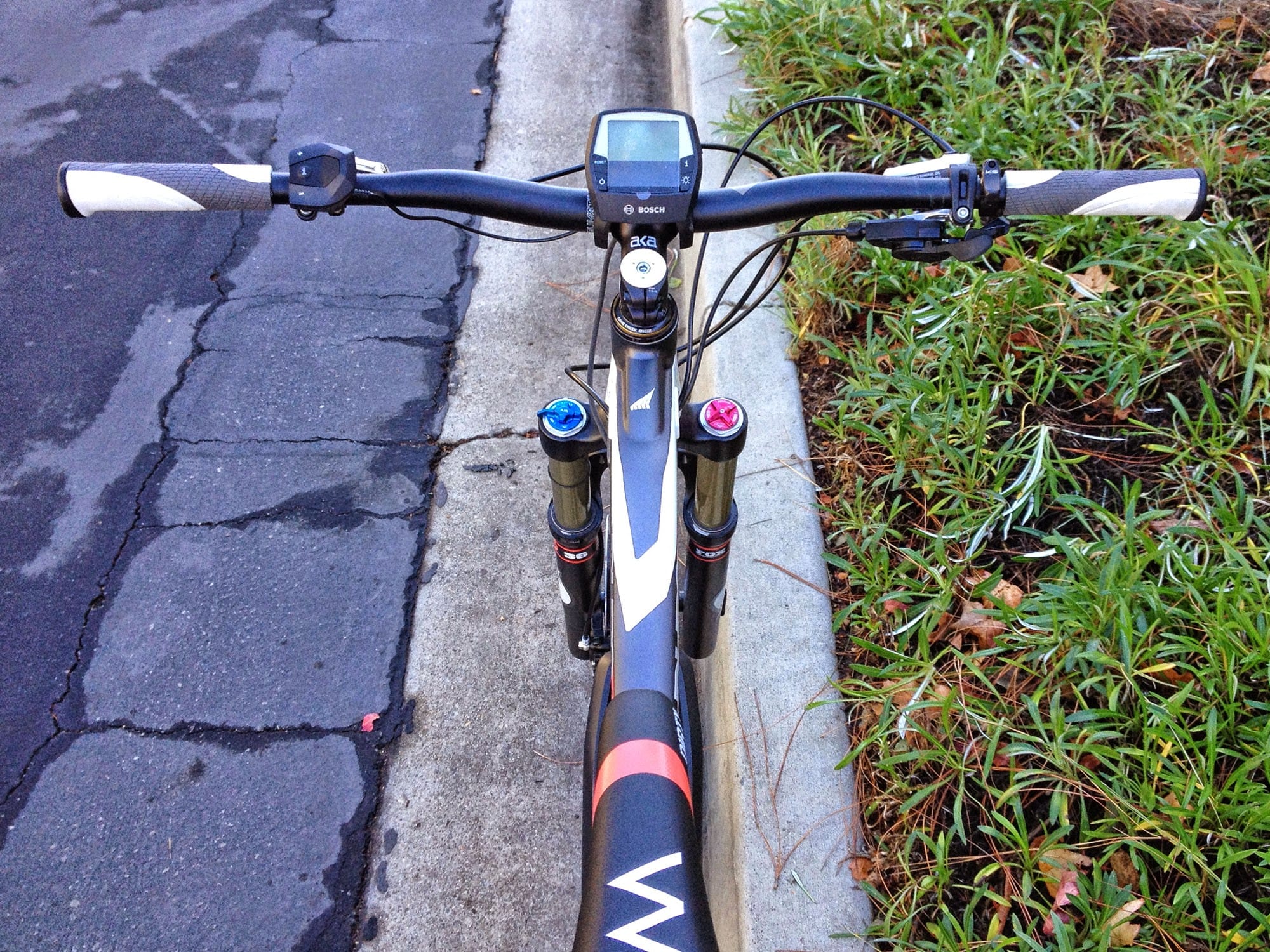
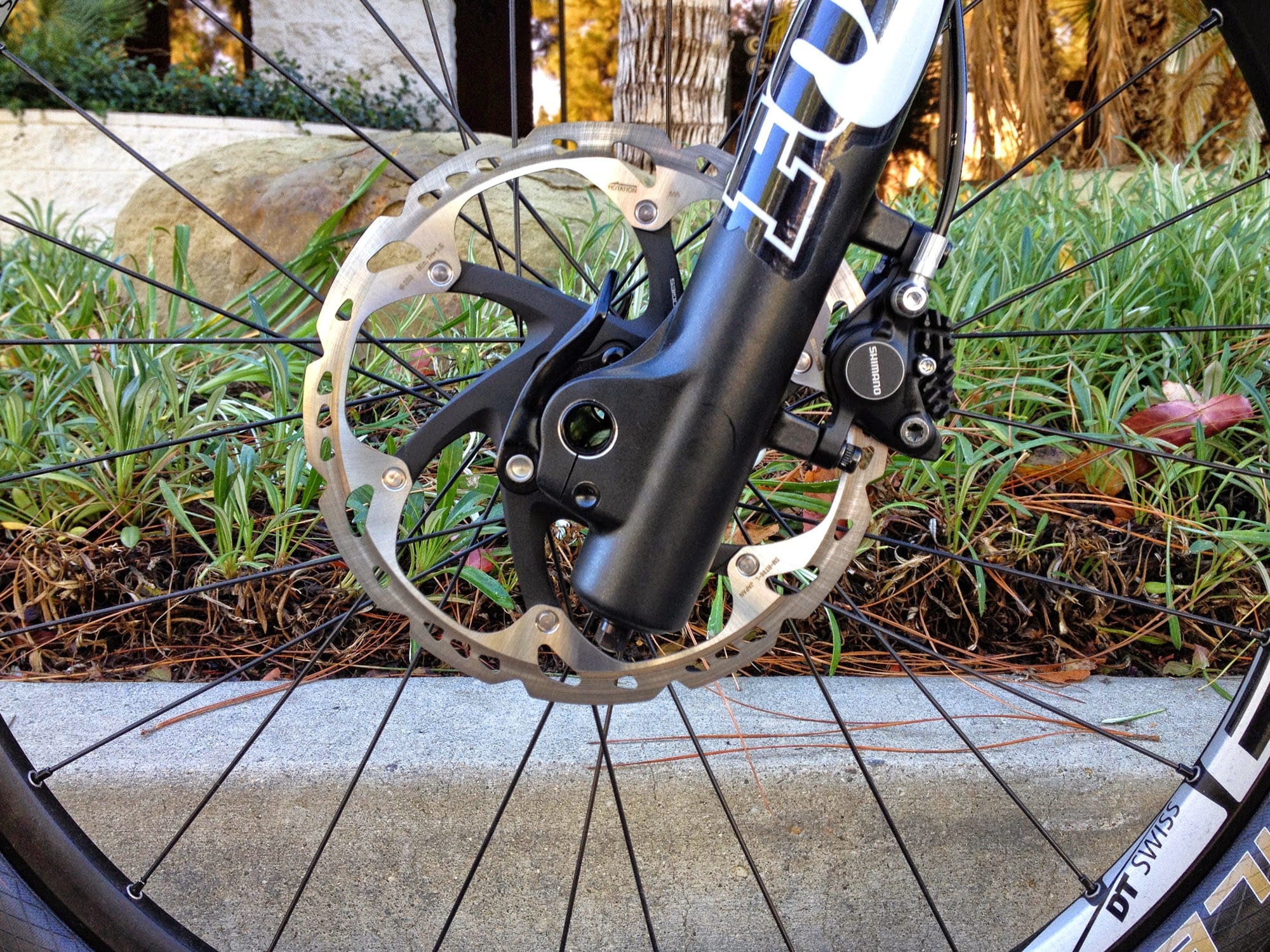
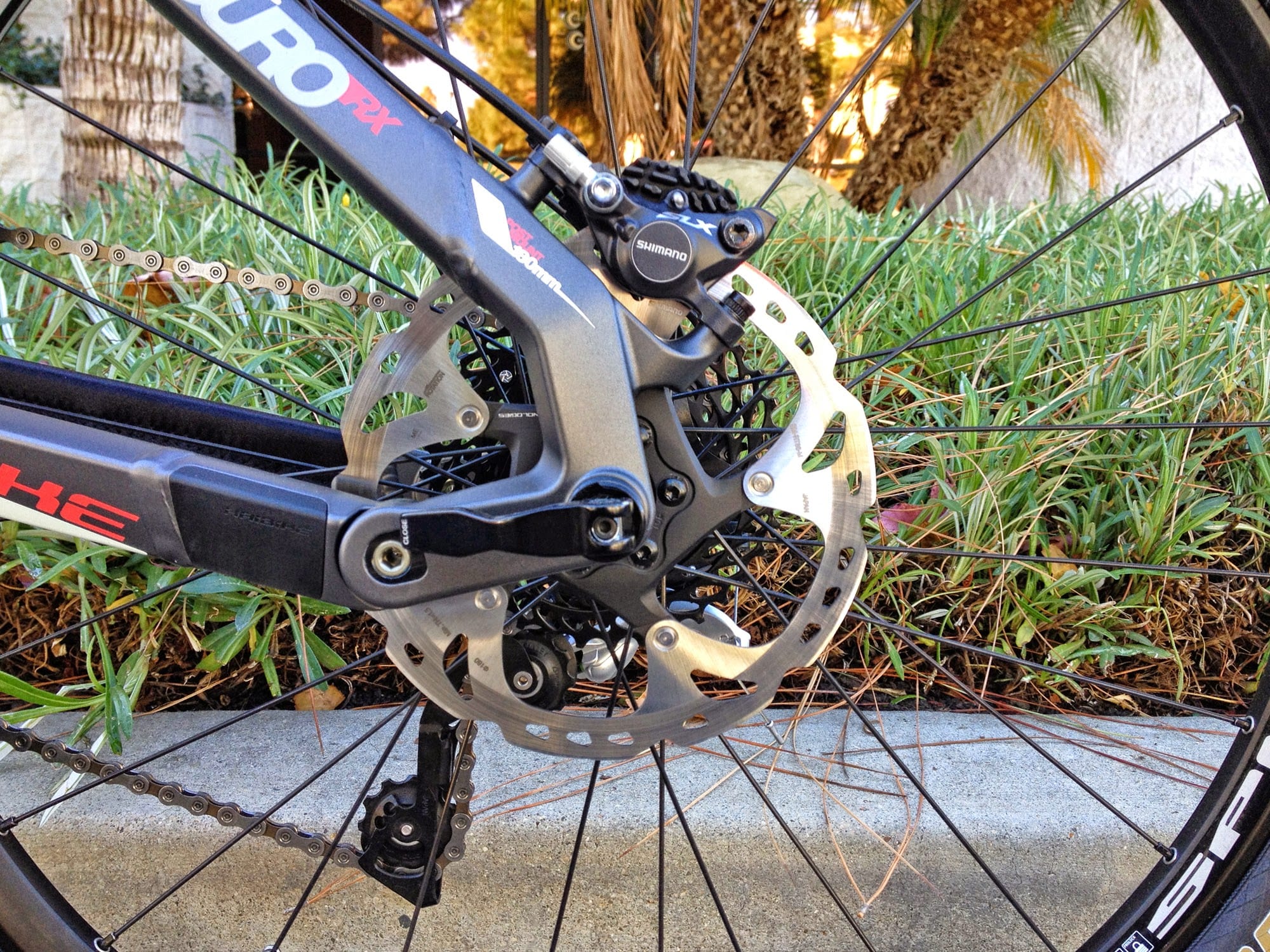
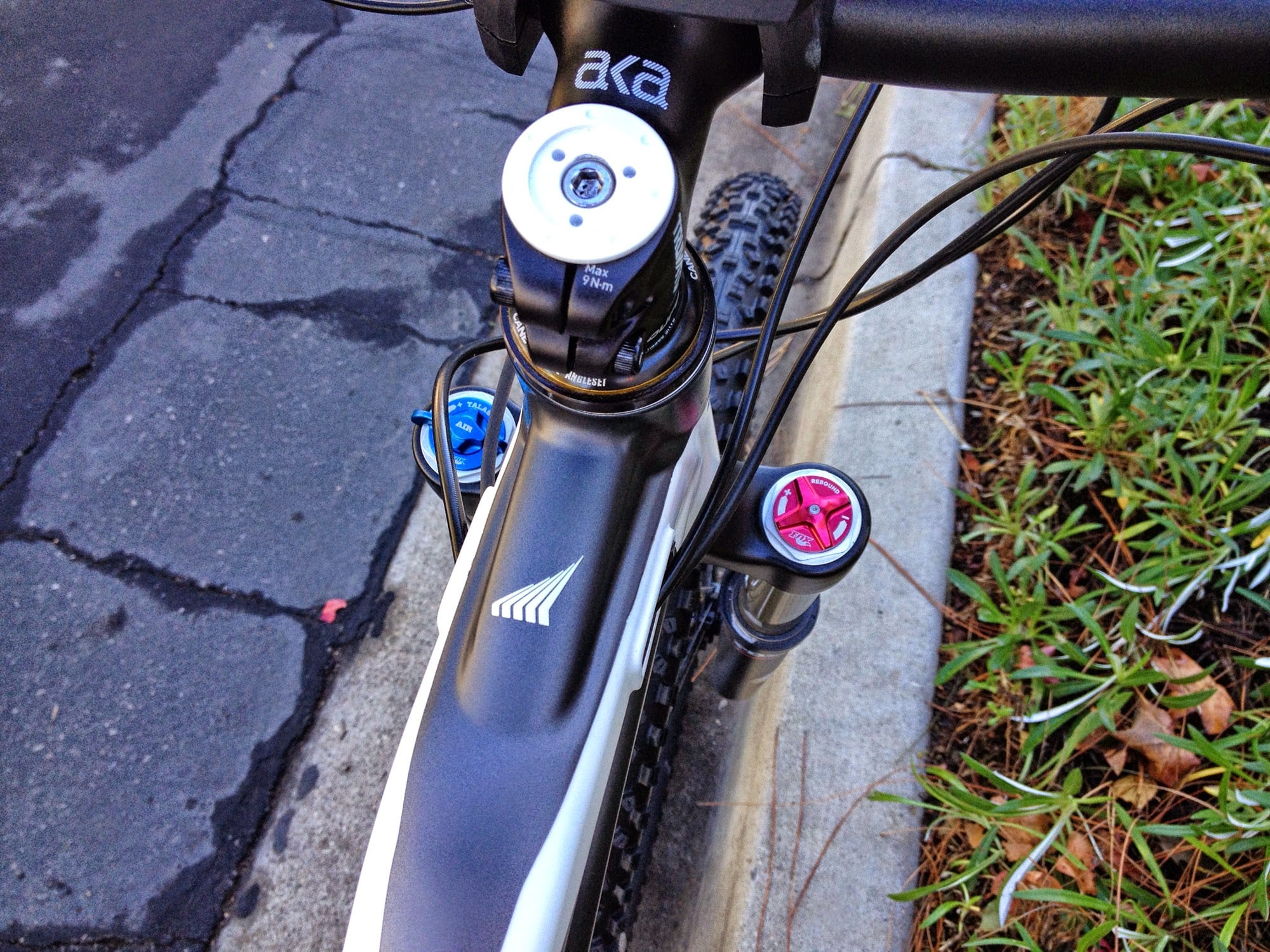
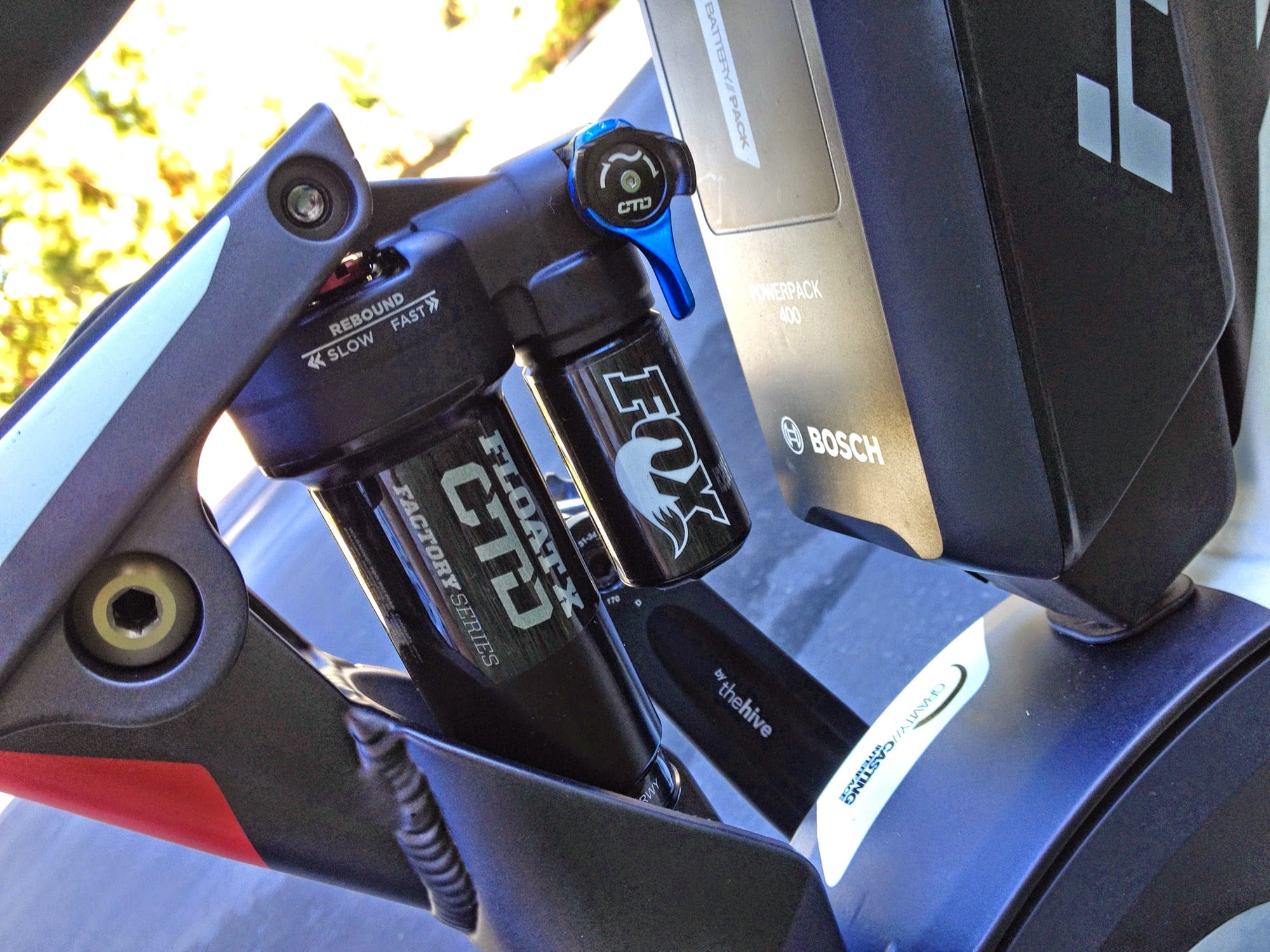
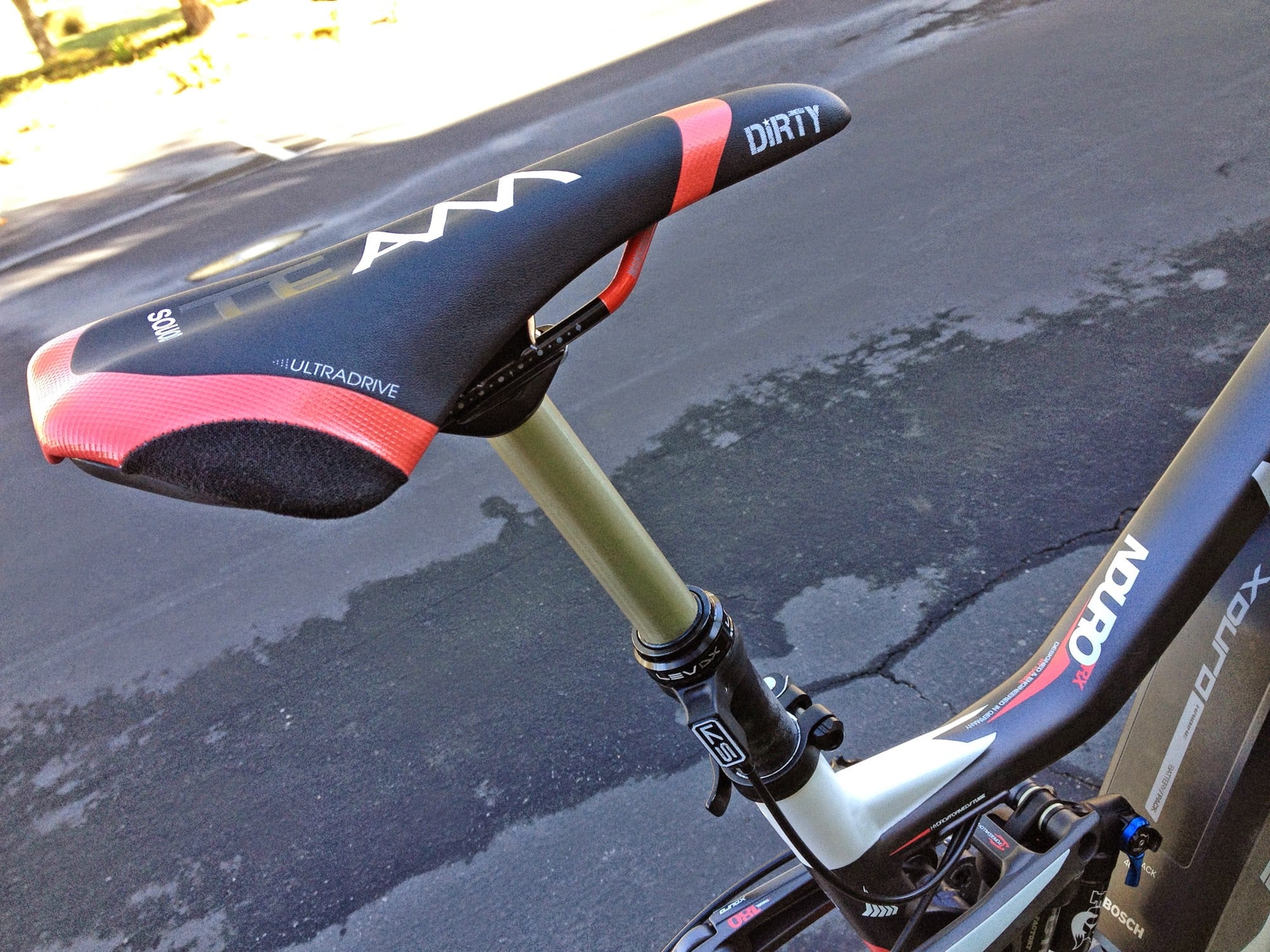

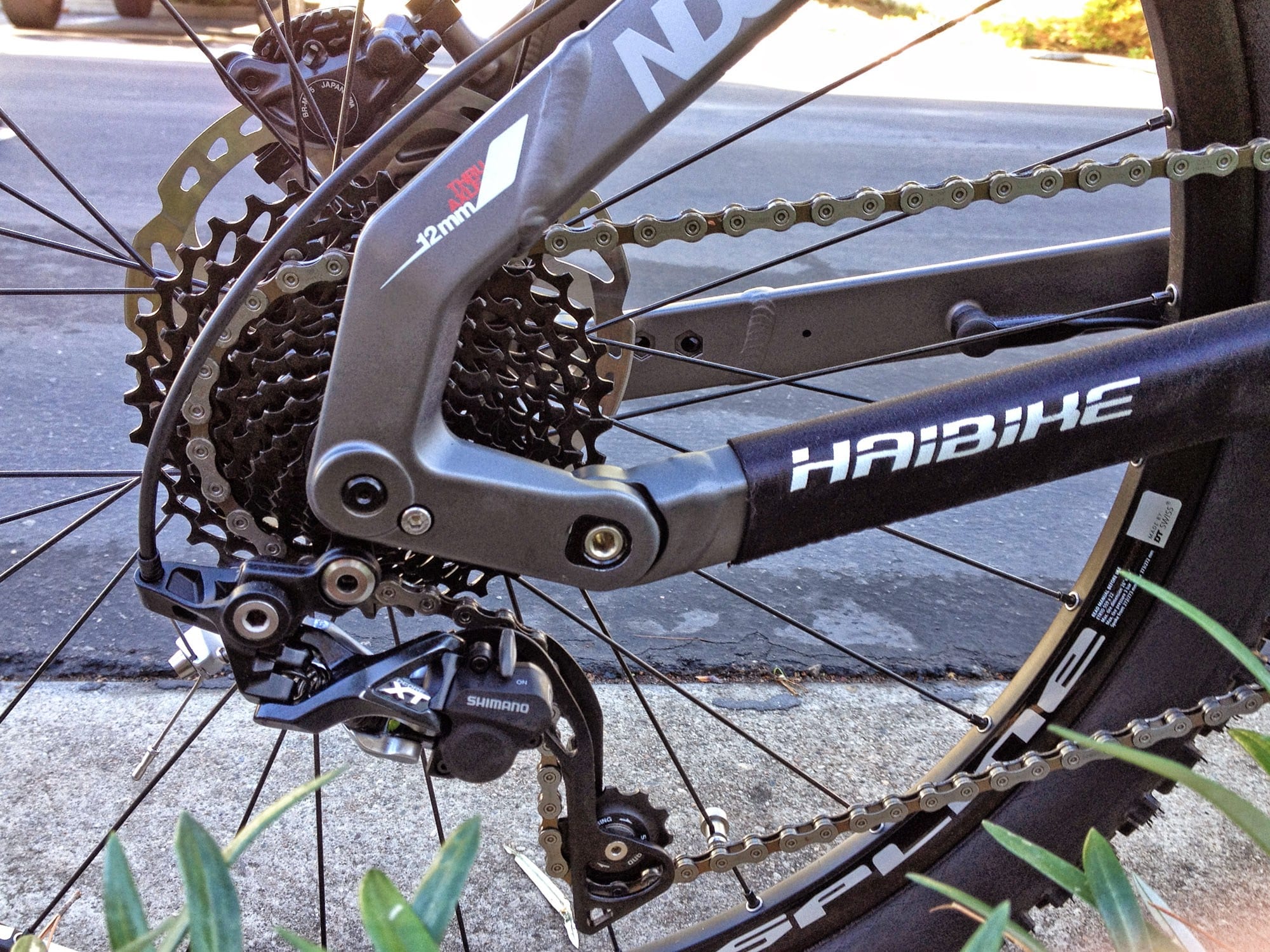

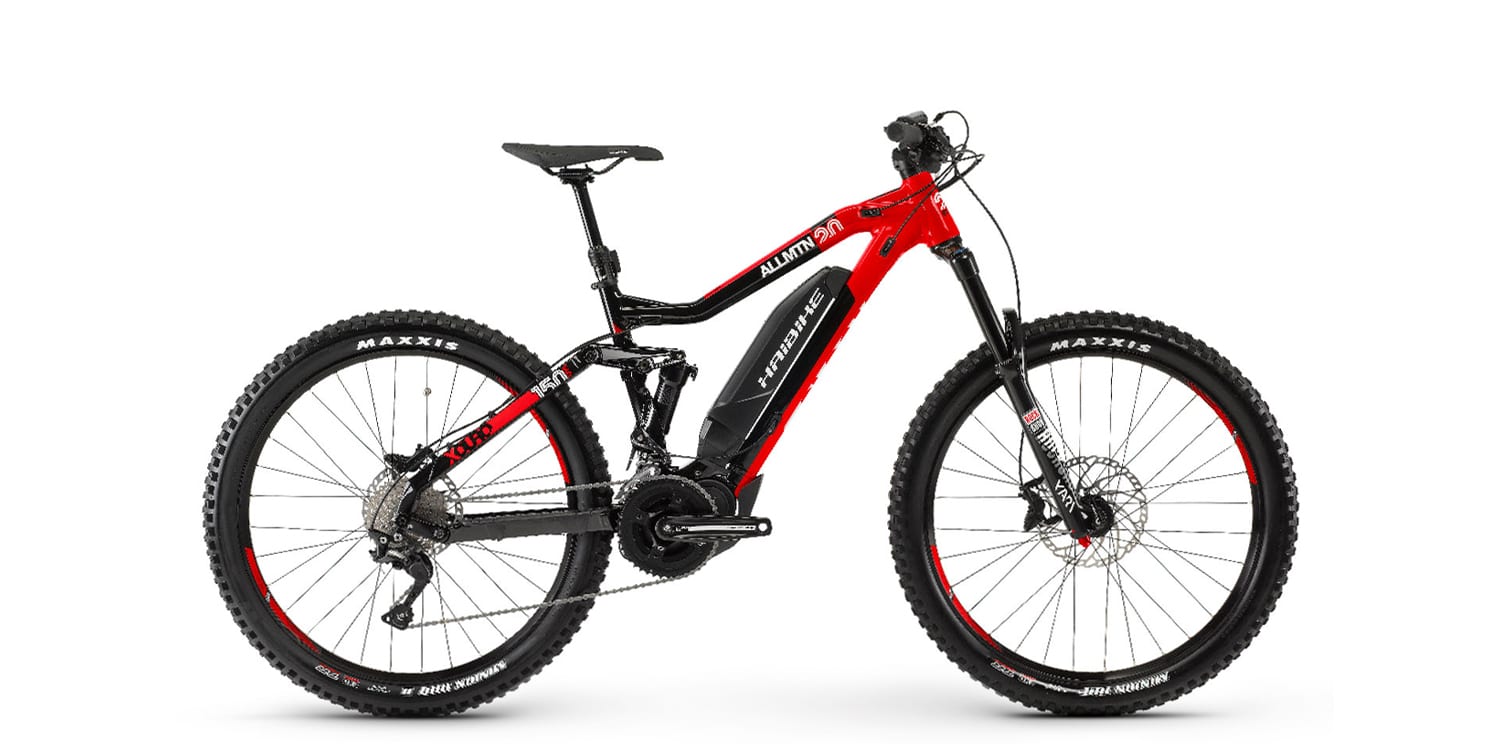
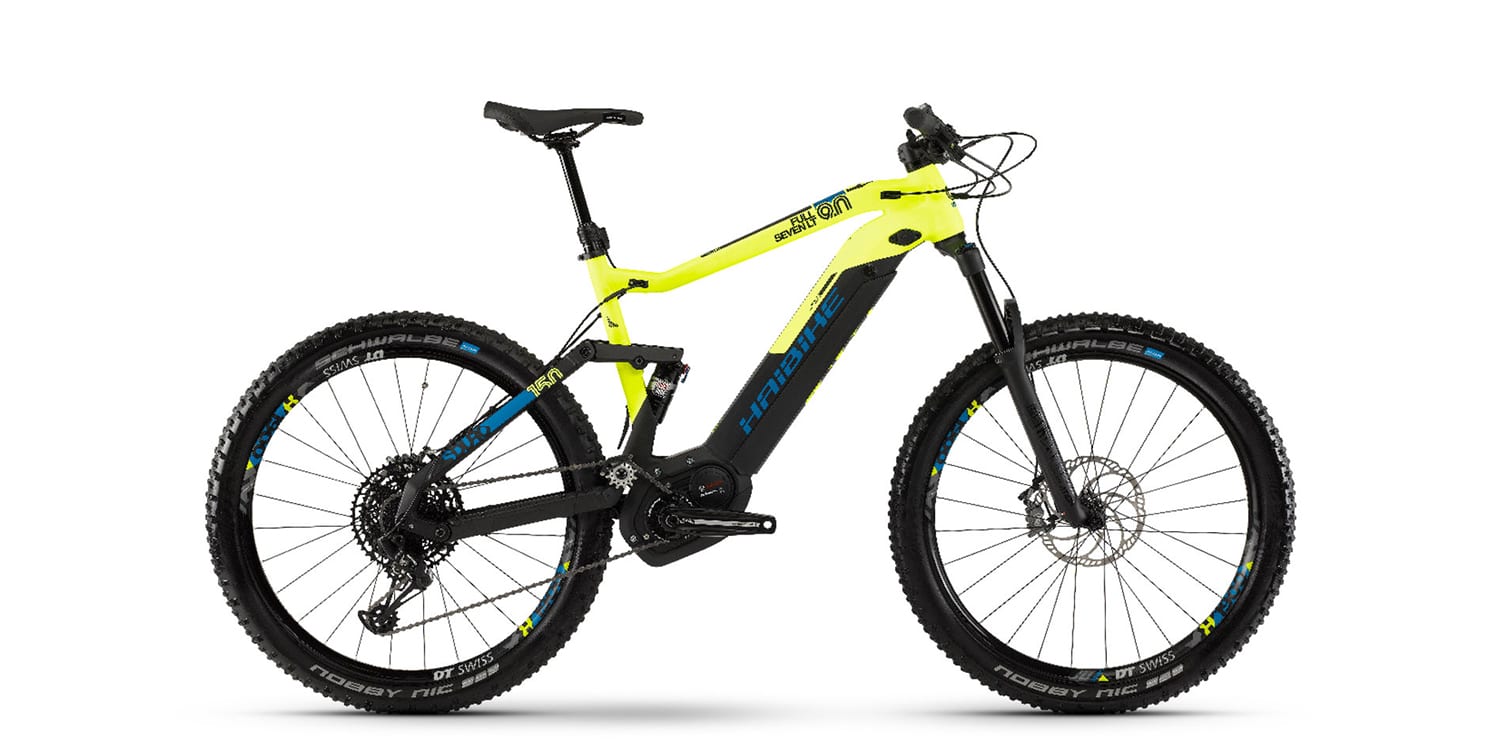
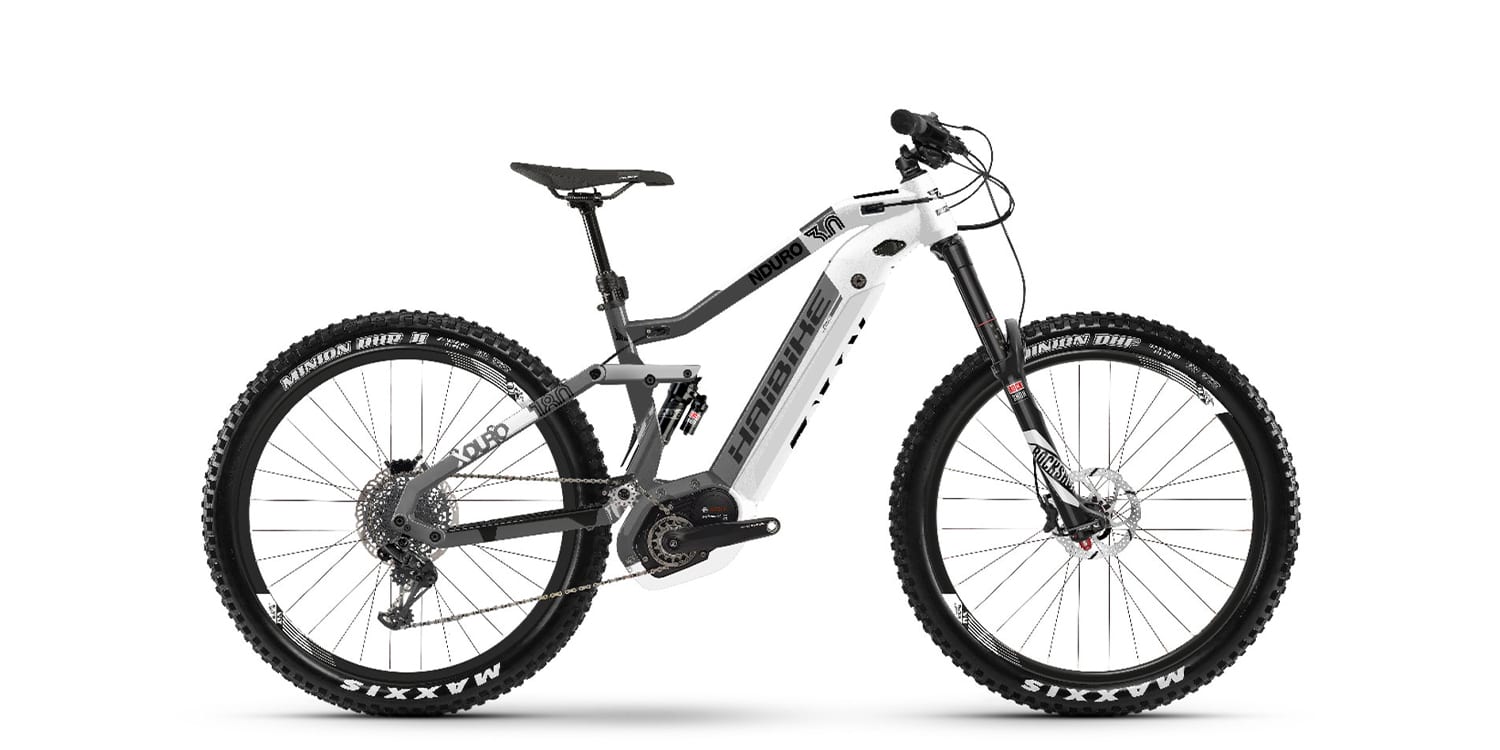
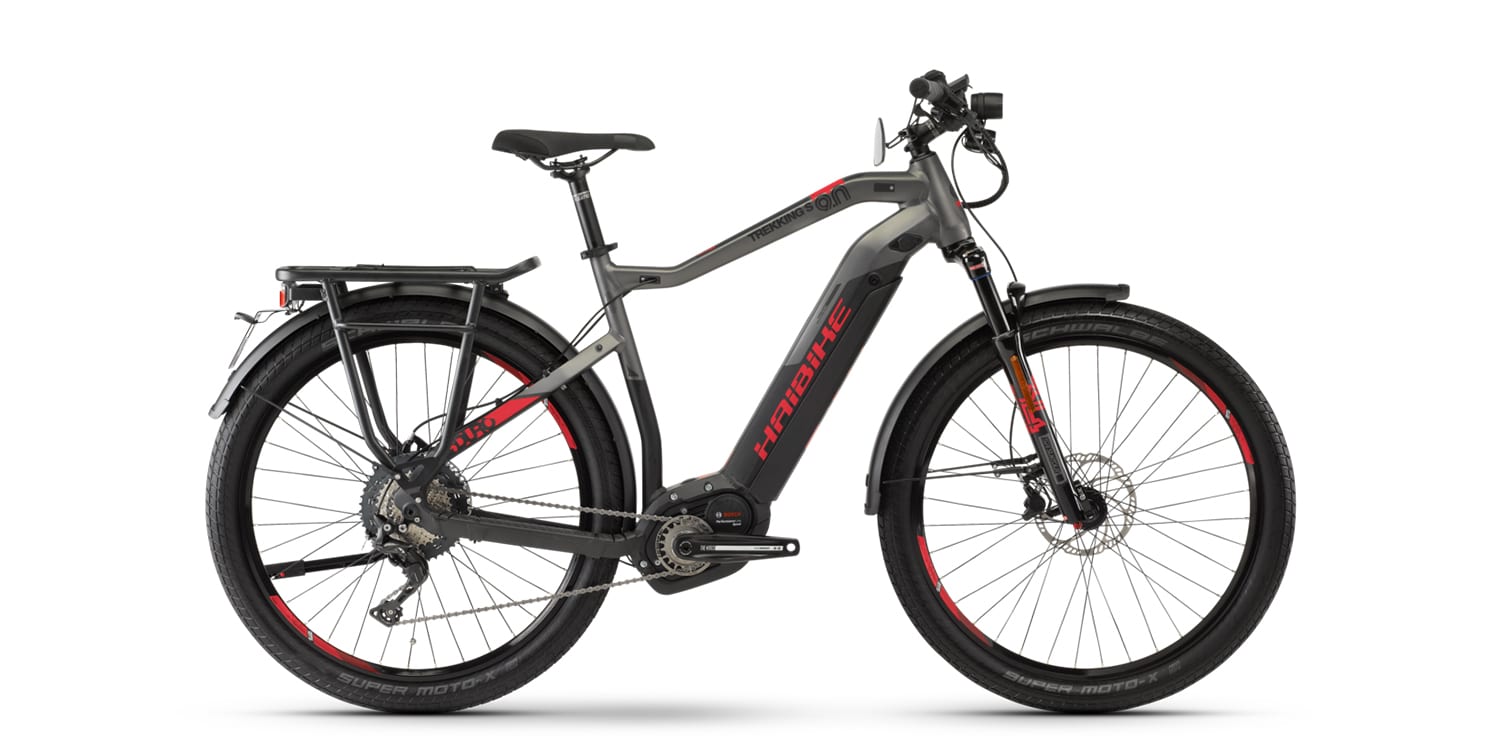
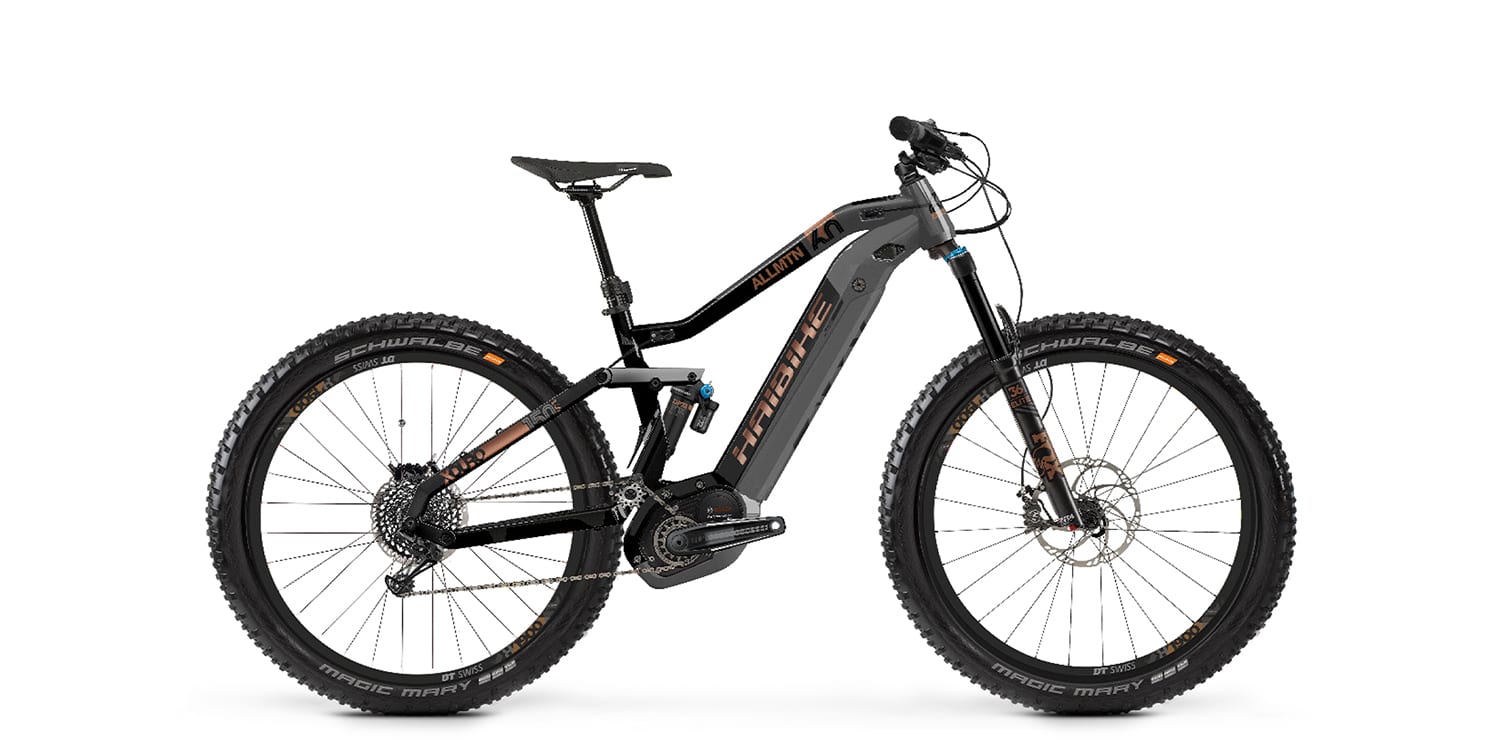
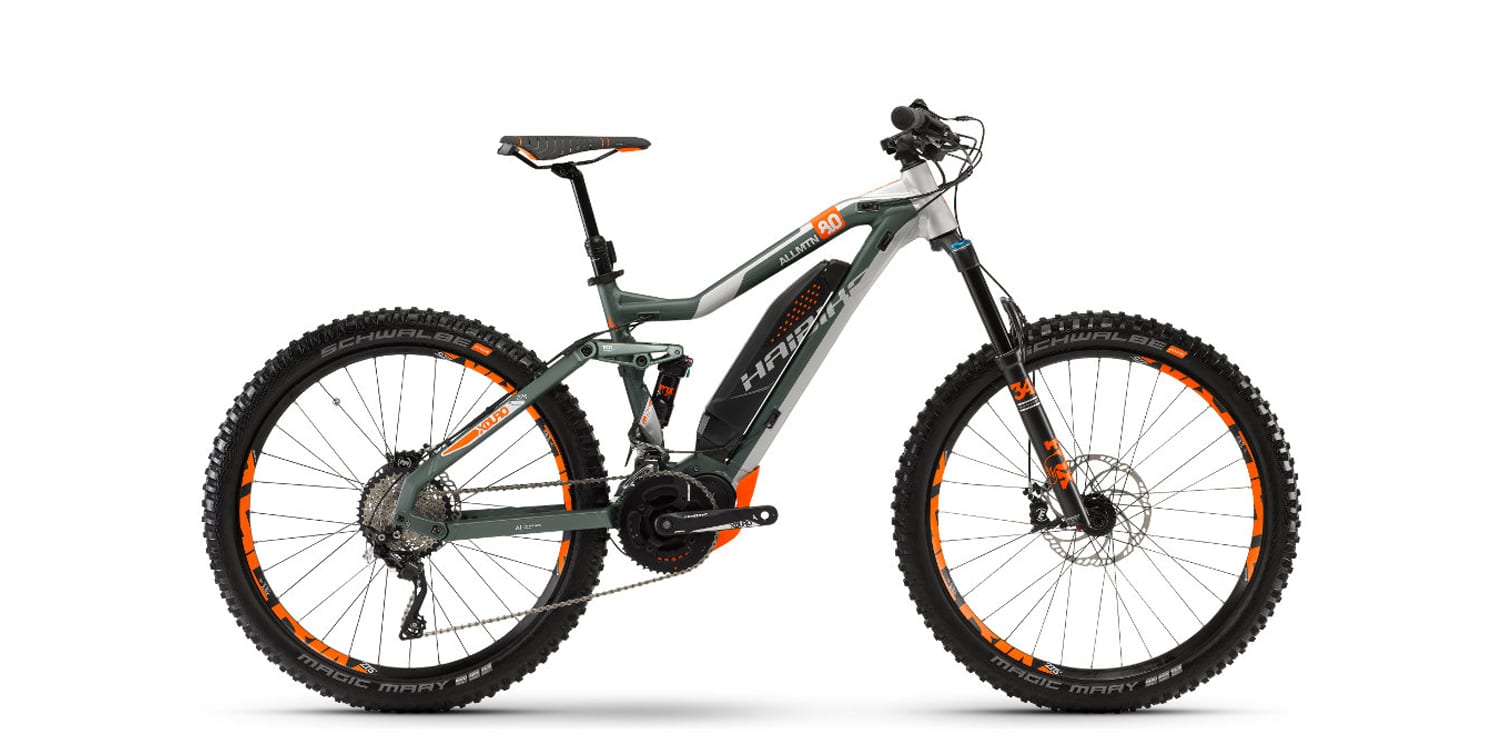
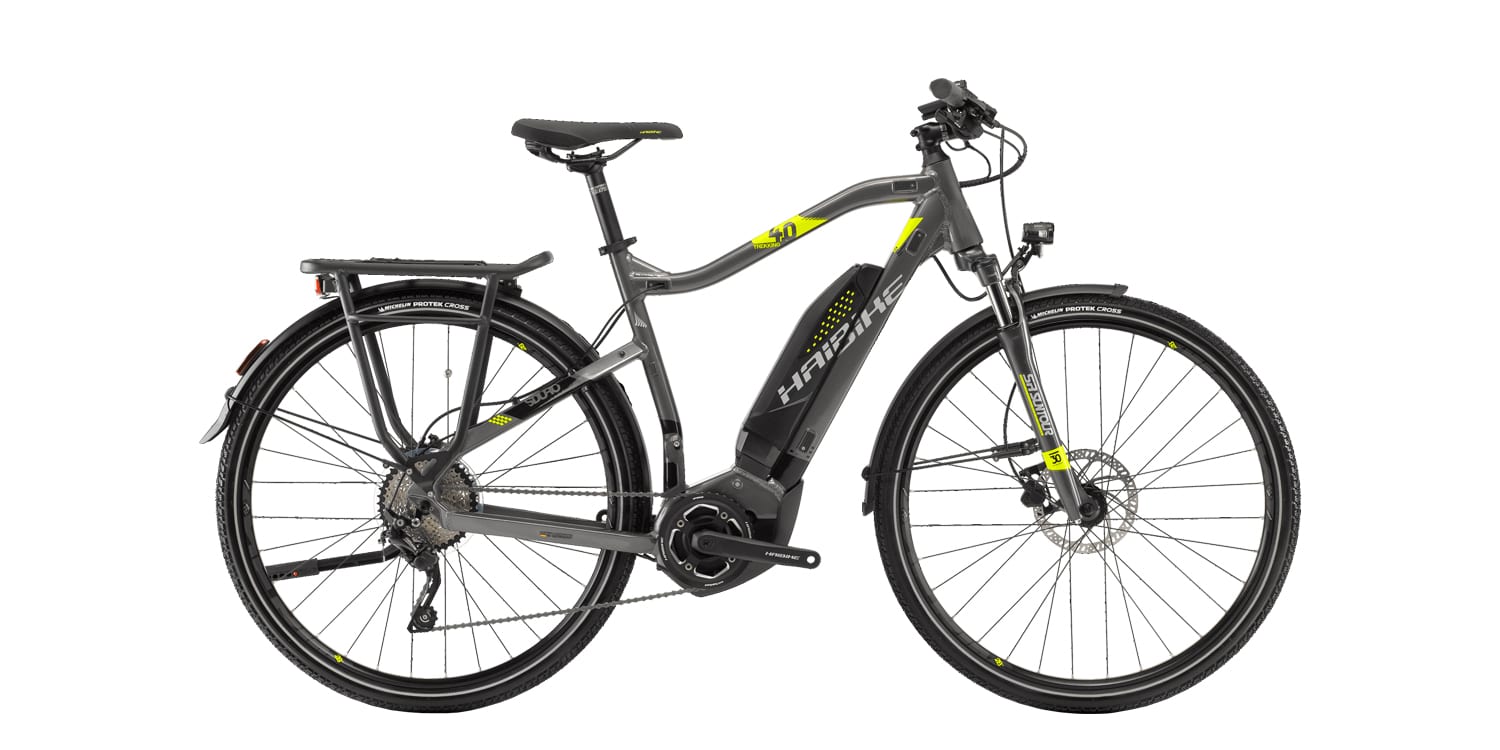
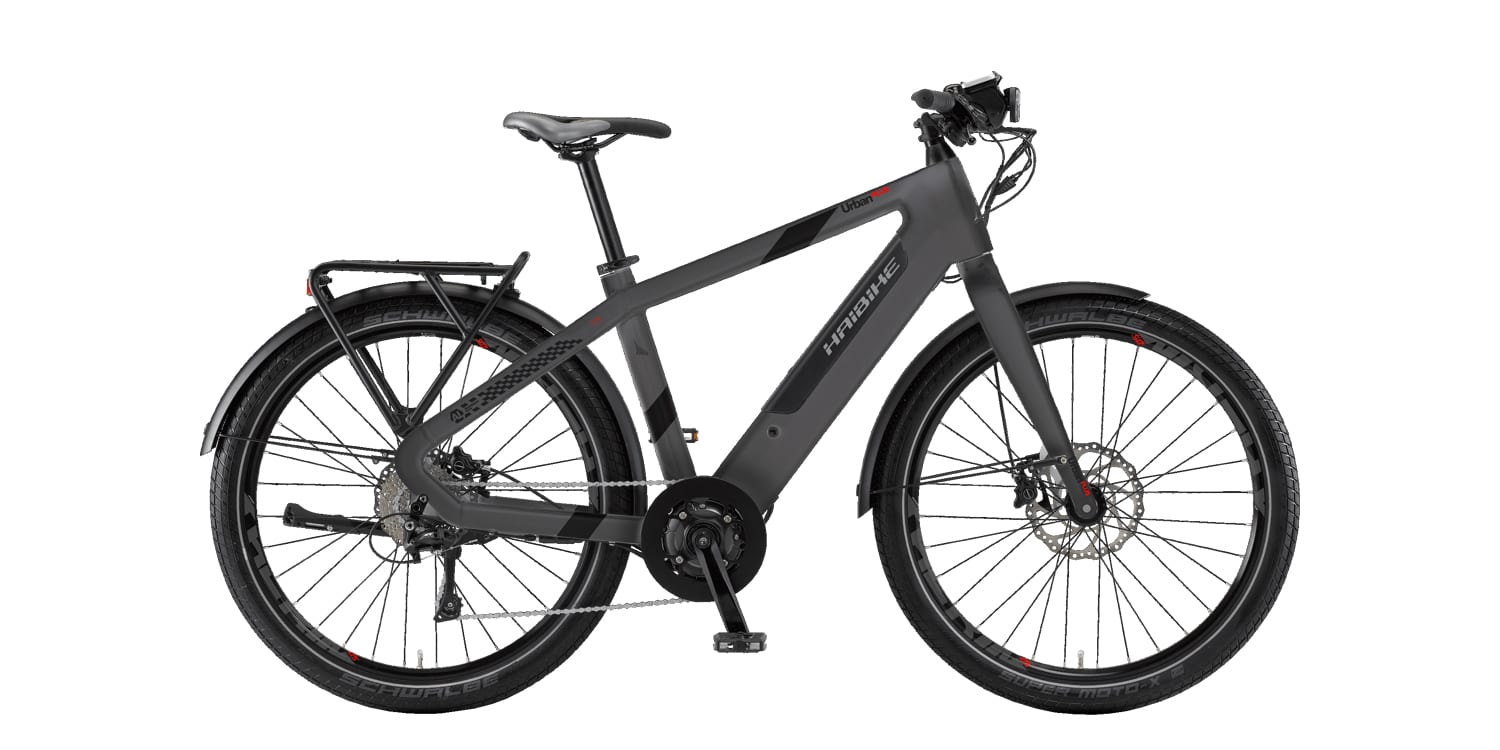
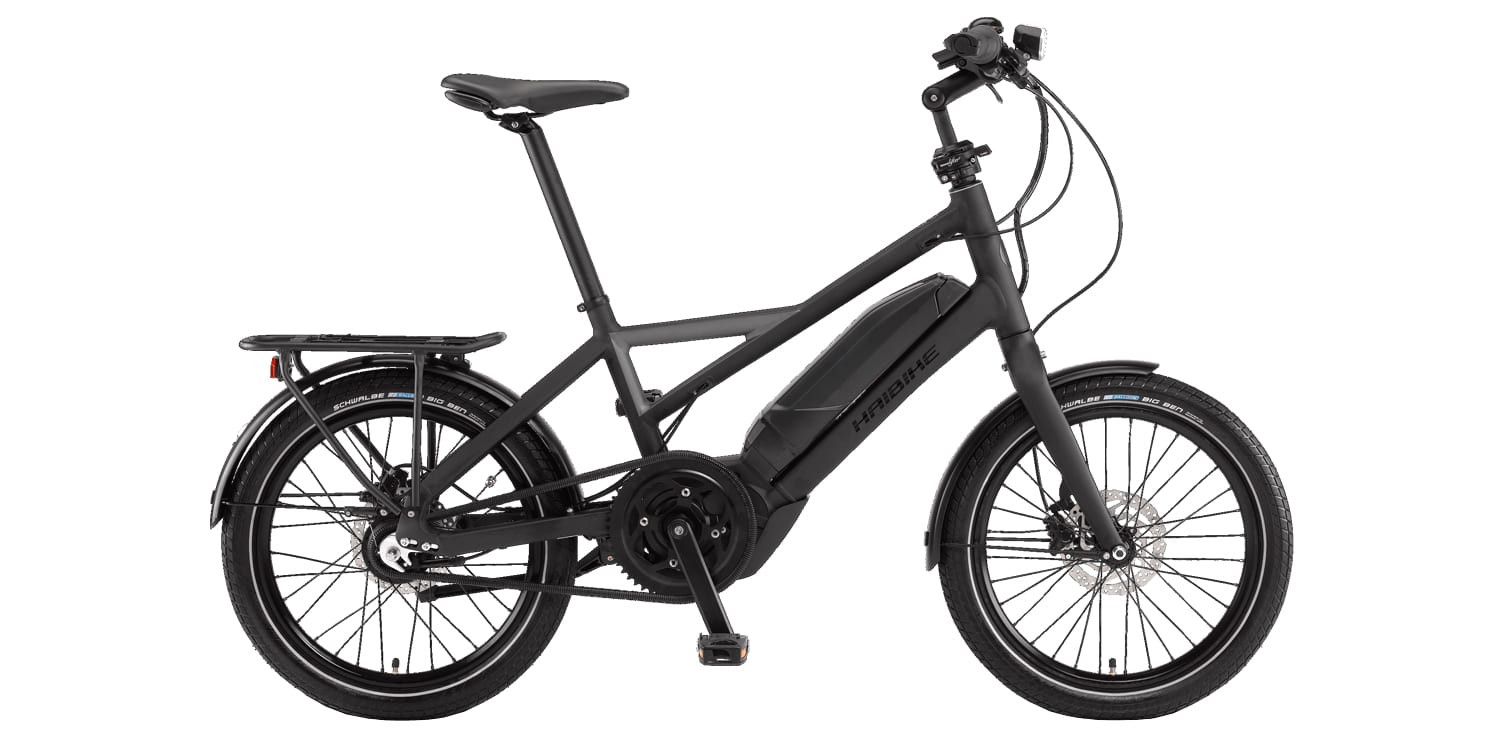
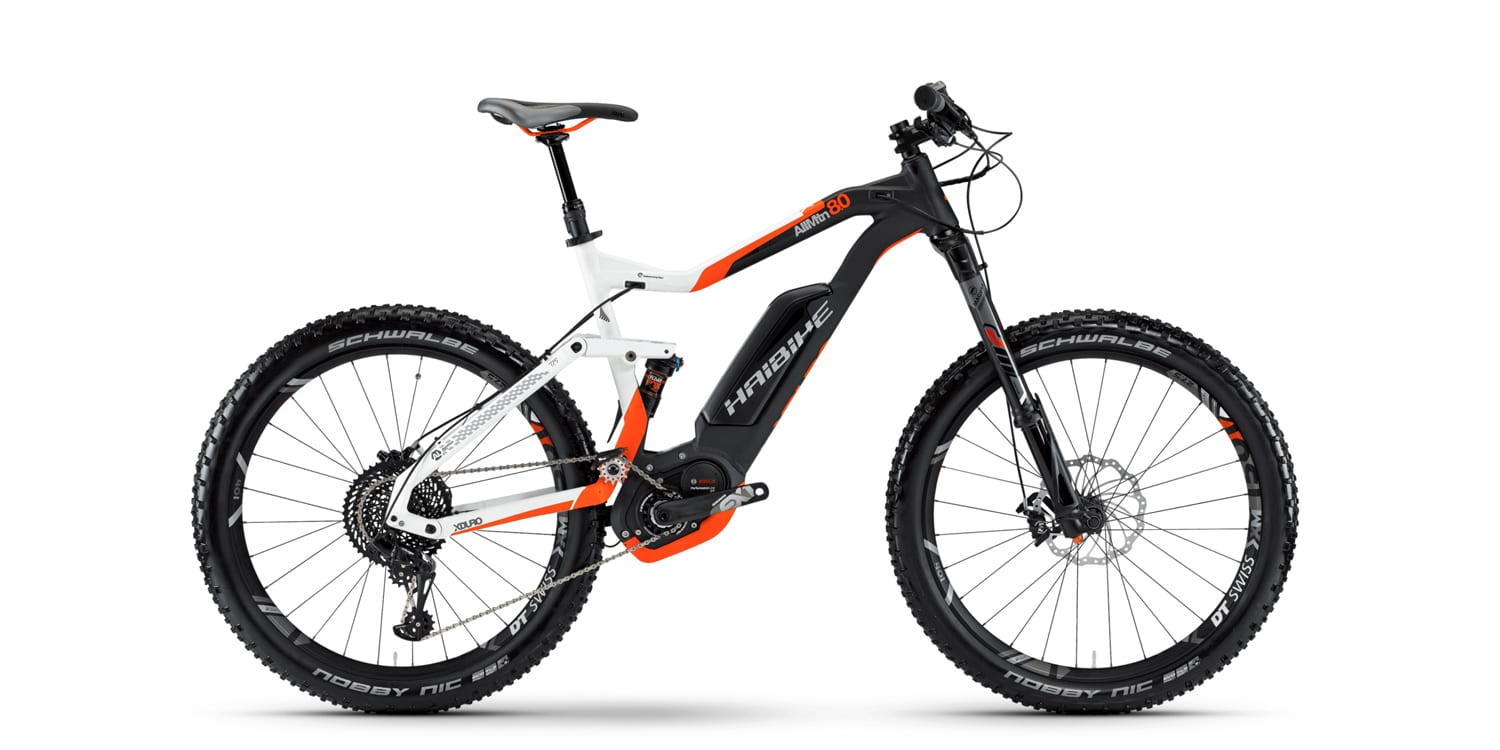
Reader Interactions